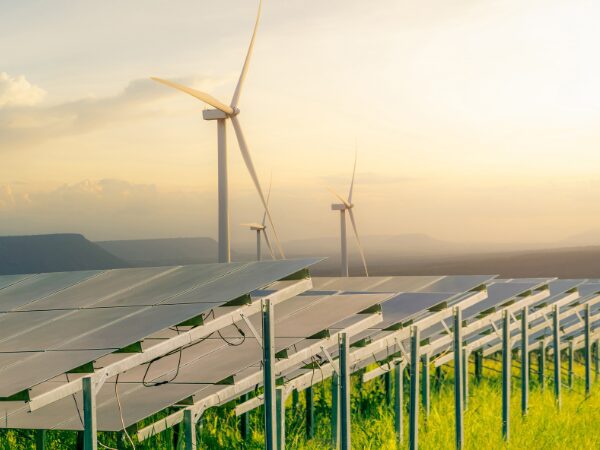The “clean label” trend in the food industry
The Clean label has transitioned from trend to a lifestyle placing pressure on the food and bever...

The rapid proliferation of IoT devices has led to transformative shifts across industries, creating challenges in network protocols. As we enter the era of next-gen IoT protocols, addressing scalability, security, and low latency becomes paramount. With an estimated 41.6 billion IoT devices generating 79.4 ZB of data by 2025, understanding protocols and standards to prevent security breaches is vital. This article delves into these issues, emphasizing the need for innovative protocols to navigate evolving IoT connectivity.
IoT is a worldwide network of interconnected devices facilitated by wired, wireless, and hybrid technologies. IoT protocols ensure data exchange and security. Depending on devices and applications, various protocols are used. Connectivity options include IP networks, Bluetooth, and RFID, each with trade-offs in power, range, and memory. (1) (2) (3) (4)
To address the issue of IoT scalability, specialized protocols have emerged, the most prominent of which are MQTT (Message Queuing Telemetry Transport) and CoAP (Constrained Application Protocol) (5) (6):
MQTT is a messaging protocol well-known for its ability to optimize communication within the IoT ecosystem, particularly in scalability-critical scenarios. The protocol employs a publish-subscribe model, which promotes efficient data distribution among a large number of devices. This model eliminates the need for devices to communicate constantly, reducing both network load and energy consumption. MQTT’s design philosophy emphasizes lightweight messaging structures that prioritize data transmission efficiency, making it ideal for devices with limited resources.
CoAP, in a similar vein, addresses the scalability challenges in IoT environments, albeit with a distinct approach. It is designed specifically to meet the needs of resource-constrained devices while maintaining an efficient data exchange mechanism. CoAp uses the lightweight User Datagram Protocol (UDP) to reduce protocol overhead and promote streamlined communication. CoAP’s ease of use for request-response interactions makes it an excellent choice for scenarios requiring low latency and energy-efficient communication.

Security is the foundation of IoT networks, protecting against potential breaches and ensuring the confidentiality, integrity, and authenticity of transmitted data. Two notable protocols, DTLS (Datagram Transport Layer Security) and OSCORE (Object Security for Constrained RESTful Environments) take center stage by addressing the overarching imperative of securing IoT communications. (7) (8)
DTLS is a significant evolution of the established TLS (Transport Layer Security) protocol, designed to improve the security of datagram-based communications in IoT networks. It extends TLS’s robust security mechanisms, providing end-to-end protection even when data is transmitted over unreliable or loss-prone networks. The architecture of DTLS ensures data integrity, confidentiality, and authentication by utilizing cryptographic protocols and mechanisms. This enhanced layer of security protects IoT communications from eavesdropping, tampering, and unauthorized access.
OSCORE: Because the nature of IoT frequently involves interactions via RESTful APIs, tailored security solutions for resource-constrained devices are required. As a result of this demand, OSCORE emerges as a response, designed to encapsulate RESTful communications within an impregnable layer of security. It is built on CoAP and incorporates cryptographic algorithms to authenticate, encrypt, and ensure the integrity of data exchange. The elegance of OSCORE lies in its ability to provide comprehensive security while considering the limitations imposed by constrained devices. OSCORE strengthens the foundations of IoT security in scenarios where resources are scarce by enabling secure RESTful interactions.
As real-time responsiveness is paramount for applications like industrial automation and vehicular communication, where safety is contingent on swift responses, achieving low latency becomes an essential pursuit. Addressing this need, specialized protocols such as 6LoWPAN (IPv6 over Low-Power Wireless Personal Area Networks), and their subsequent advancements step to the forefront.
6LoWPAN is a protocol that combines IPv6 with low-power wireless networks. This integration enables seamless communication while adhering to the constraints of energy efficiency and low latency. 6LoWPAN’s design optimizes data exchange within networks of resource-constrained devices, ensuring that communication latency is kept to a minimum.
The Internet of Things landscape thrives on seamless communication among myriad devices, and standardization is a critical driver for adopting next-generation protocols. Standards are developed and propagated by organizations such as the Internet Engineering Task Force (IETF), ensuring consistency across diverse IoT ecosystems. As the Internet of Things evolves, it will converge with transformative technologies such as 5G and edge computing.
Protocol integration with these technologies is required to fully realize their potential. Edge computing decentralizes data processing while 5G’s high-speed, low-latency capabilities provide real-time opportunities. Next-generation IoT protocols rely on adaptability and synergy with these technologies to reshape the landscape. The collaboration emphasizes protocol agility in a rapidly changing technological landscape. Standardized IoT protocols create a harmonious digital foundation. Converging protocols and innovations such as 5G reshape industries, aided by a mix of standardization and adaptability. The advent of 6G introduces transformative potential, ushering in a new era of low-latency possibilities. Despite this diversity, standardization is critical for enabling seamless communication. (9) (10)
Companies that are innovating in this sector are likely to be eligible for several funding programs including government grants, and SR&ED.
Want to learn about funding opportunities for your project? Schedule a free consultation with one of our experts today!
References:
Explore our latest insights
More arrow_forward
The Clean label has transitioned from trend to a lifestyle placing pressure on the food and bever...

The Industry 4.0 represents a blend of two industries: information technology and manufacturing. ...

Provincial governments are slowly unveiling their provincial budgets outlining fiscal strategies ...

Recently, Canadian representatives attended COP27 to discuss the actionable steps to implement to...